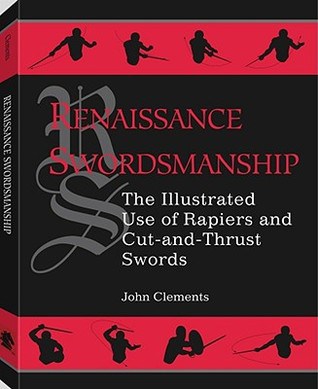In Renaissance Swordsmanship, John Clements explicitly states his goals in the very first sentence: “The purpose of this work is to serve as a short reference for sword enthusiasts and a guide to direct their study.”
The text achieves the first part of that statement; Renaissance Swordsmanship is an adequate reference. As a guide to direct the path of students’ studies, the work is wanting in both clarity and focus. Renaissance Swordsmanship does not hold up when compared to more recent works.
Renaissance Swordsmanship: An Early Interpretation
Published in 1997, Renaissance Swordsmanship predates much of the recent enthusiasm and scholarship for Western martial arts. Many of the translations of historical manuals that are currently studied widely had not yet been written in 1997.
While still far from irrelevant, the formatting and presentation feels dated. It lacks both the polish and refinement that the last 20 years of collective work and study by the practitioners of Western martial arts now bring to their instruction and writings.
The early chapters of the book deal with the history and physical characteristics of the rapier and the cut and thrust. These sections hold up the best compared to more recent scholarship. Clements presents the information clearly. The illustrations of the swords in this section are well labeled and understandable.
The Weakness Of Illustrations
The illustrations are just that; illustrations. All the depictions of swords and of actions are drawings, not photographs. While the drawings are far from the worst I have ever seen in a martial arts book, they pale in comparison to modern, high quality photographs.
These illustrations have the same ambiguity issues as historical manuals with hand-drawn pictures. Several subtler aspects, such as wrist angle or sword edge alignment, are impossible to determine in many of the drawings. Of every aspect of this work, the illustrations have aged the most poorly.
Renaissance Swordsmanship Examining Techniques
The later chapters of Renaissance Swordsmanship deal with rapier and cut-and-thrust sword techniques . There are many topics and techniques covered in these chapters, but Clement’s covers them generally. There is also a lack of organization in these sections which hampers the overall utility as a study guide.
Sections in these chapters transition between different weapon combinations, fighting tactics, and concepts rapidly. There is little to no text connecting the sections together. There are several instances where the illustrations do not appear to match with the topic of the text.
Of special note is the inclusion of a section dealing with how to use the rapier and cut-and-thrust sword against larger weapons, such as great sword, spear, or pole arm. Discussions of the techniques and tactics of a mixed weapons fight are relatively rare in other guides.
Final Thoughts on Renaissance Swordsmanship
Renaissance Swordsmanship” is an interesting book that students can use as a reference. It is also a snapshot in the history of Western Martial Arts, showing where the study was after the founding of the SCA but before the development of the modern HEMA movement.
At the time of publication it was at least somewhat ahead of its time. More than twenty years of increasing interest and scholarship and improvements in photography and printing only make this book’s weaknesses more noticeable.

